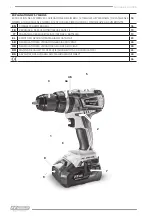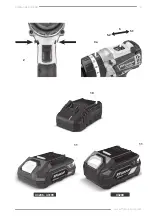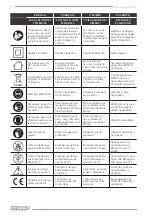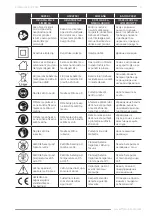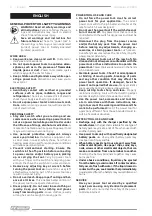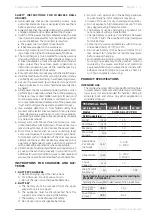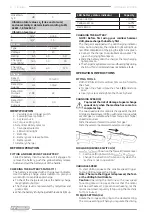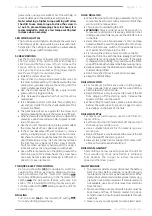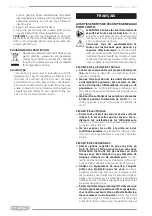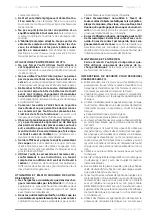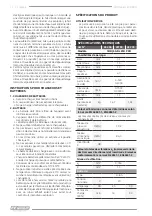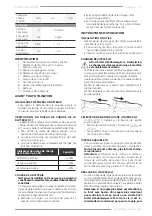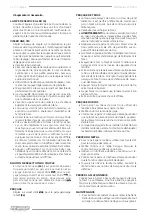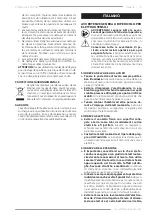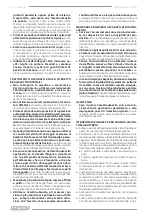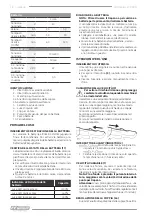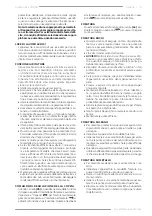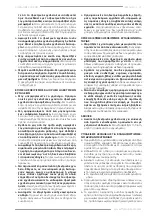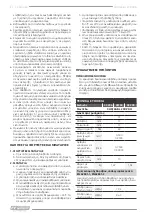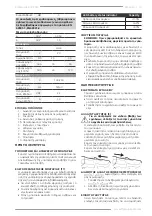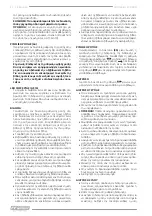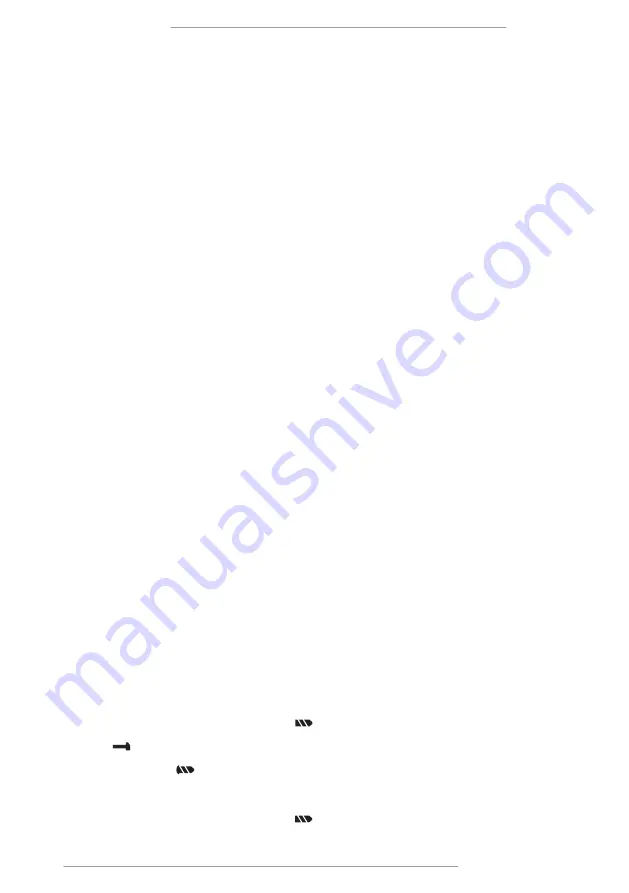
English |
9
CHD/60-BL 20V PRO
www.ffgroup-tools.com
power when using a screwdriver bit. This will help to
prevent damage to the workpiece and/or screw.
Note: selecting a higher torque setting will allow
the drill to use more torque to drive the screw in
or out. To prevent damaging the screw head, it is
recommended to start at a low torque setting and
increase when necessary.
LED WORKLIGHT (6)
The tool has an LED light to illuminate the work area
and improve vision when working in areas with insuf-
ficient light. The LED light will switch on automatically
while the trigger switch is depressed.
SCREW DRIVING
Set the torque collar to lowest setting and tighten
the first screw. If the clutch ratchets and makes a
clicking sound before screw is flush, increase the
torque setting and continue tightening. Repeat
until you reach the correct setting/screw depth.
Use this setting for remaining screws.
Install the correct driver bit.
Ensure that the torque adjustment collar is set to
the most suitable setting, if in doubt start with a low
setting and gradually increase the setting until the
most suitable position is found.
Use the correct speed for the job, apply minimal
pressure to the trigger initially.
Only increase the speed when full control can be
maintained.
It is advisable to drill a pilot hole first, slightly lon
-
ger and just smaller than the shank diameter of the
screw to be fitted.
The pilot hole will act as a guide for the screw and
will also make tightening of the screw less difficult.
When screws are positioned close to an edge of the
material, a pilot hole will also help to prevent split-
ting of the wood.
Use the correct countersinking bit to accommodate
the screw head so that it does not protrude.
If the screw becomes difficult to drive in, remove
and try a slightly larger or longer hole but remem-
ber there must be enough material for the screw to
grip! If restarting a screw in a hole, locate and make
the first few turns by hand. If the screw is still dif
-
ficult (as when using very hard woods) try using a
lubricant such as soap; liquid soap is usually best.
Keep sufficient pressures on the drill to prevent the
bit turning out of the screw head. The screw head
can easily become damaged making it difficult to
drive it in or even remove it.
TORQUE SELECTION CONTROL
By turning the collar
(4b)
it is possible to switch be-
tween rotary drilling, percussion drilling and screw-
driving functions. Set the "twist drill" setting
,
for rotary drilling/screwdriving, in the "hammer drill"
setting
, the percussion feature will come into
action. This is intended for drilling into masonry, etc.
Turn the collar to the
setting to use the drill for
screwdriving.
DRILLING
Turn the collar
(4a)
to the "twist drill" setting
,
for rotary drilling/screwdriving
HOLE DRILLING
When attempting to drill a large diameter hole, it is
sometimes best to start with a smaller drill bit then
work up to the required size.
This prevents overloading the drill.
WARNING!
Many accidents occur because of un-
foreseeable situations. Please pay attention that
drilling-out a small hole may cause the drill bit to jam
in the hole.
Remember to use a “wood-pecker” action on deep
holes to allow the swarf to be ejected from the hole.
If the drill bit snags, switch off immediately to pre
-
vent permanent damage to the drill.
Try running the drill in reverse to remove the bit.
Keep the drill in line with the hole. Ideally, the drill bit
should enter at right angles to the work. If the angle
is changed during drilling, this could cause the bit to
snap off blocking the hole and perhaps causing injury.
Reduce pressure as the drill is about to break through
the item being drilled.
Don’t force the drill, let it work at its own pace.
Keep the drill bit sharp.
DRILLING WOOD
For maximum performance when drilling larger
holes, use auger bits or spade bits for wood drilling.
Set the tool to the drill mode.
Begin drilling at a very low speed to prevent the bit
from slipping off the starting point. Increase the
speed as it bites into the wood.
When drilling through holes, place a block of wood
behind the work piece to prevent ragged or splin-
tered edges on the back of the hole.
DRILLING METAL
For maximum performance, use HSS drill bits for
metal drilling.
Set the tool to the drill mode. Mark off the centre of
the hole using a centre punch.
Use a suitable lubricant for the material you are
working on.
Begin drilling at a very low speed to prevent the bit
from slipping off the starting point.
Always clamp sheet metal. Support thin metal with
a block of wood to avoid distorting it.
DRILLING MASONRY
Start drilling at a low speed to prevent the drill bit
from wandering. Once penetration is achieved,
fully depress the trigger to achive maximum
speed and hammer power.
MAINTENANCE
1. To prevent accidents, always disconnect the battery
from the tool. Before cleaning or performing any
maintenance the tool may be cleaned most effec
-
tively using compressed air. Always wear safety gog-
gles when using compressed air. If compressed air is
not available, use a brush to remove dust and chips
from the tool.
2. Motor ventilation vents and switch levers must be
kept clean and free of foreign matter. Do not at-
tempt to clean by inserting pointed objects through
openings.
3. Never use any caustic agents to clean plastic parts.


